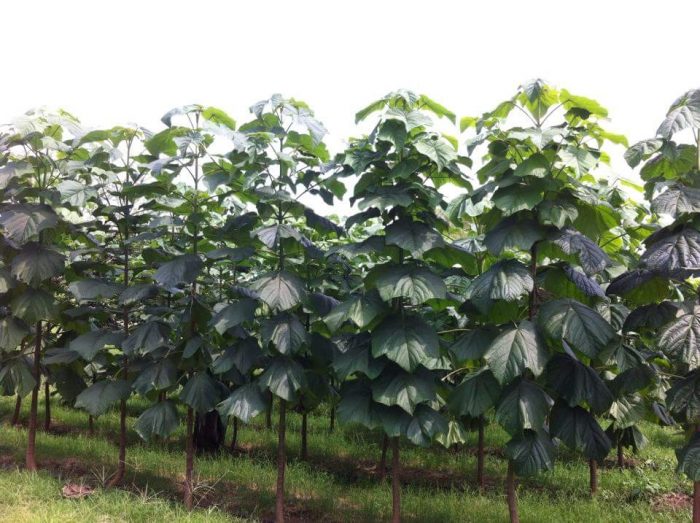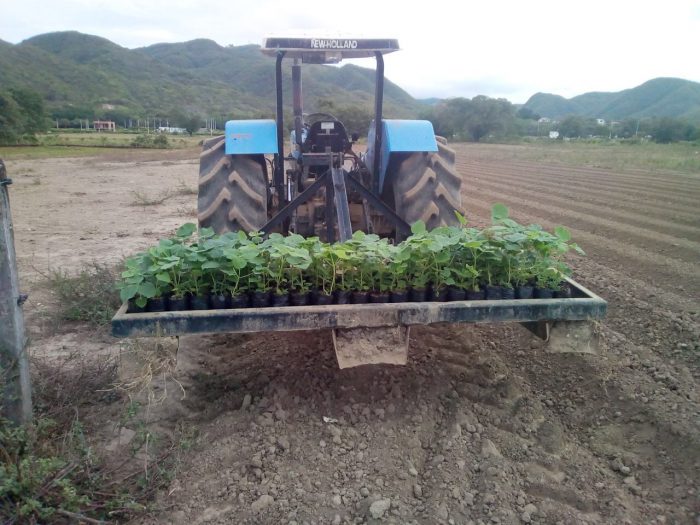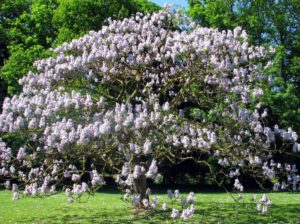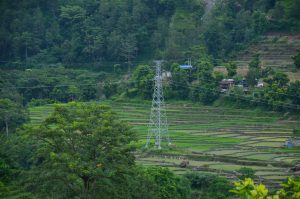Its abundant lilac flowers and fragrant aroma make it a favourite for gardeners and landscape designers. But the Chinese empress, or kiri, tree is beginning to ring alarm bells among scientists and environmental authorities in Latin America.
Colombia just declared this leafy tree (scientific name Paulownia tomentosa) as a species with a “high risk of invasion”. There are still relatively few planted in the country, mostly for timber, but the preventive move has concerned growers.
Long life
Despite its beauty and valuable wood, Colombian scientists fear the kiri could be an ecological time bomb. It grows at an impressive rate and produces thousands of seeds that are dispersed by the wind. Its branches can reproduce new trees and it sprouts easily after fire.
These advantages make it a “super species” that thrives in environments such as pastures and streams. Yet this is precisely what makes it a very difficult plant to control.
As a result, the Colombian Government’s National Committee of Invasive Alien Species concluded two months ago that it would be better to avoid its proliferation rather than regret it. The body is responsible for evaluating the risks of non-native species in Colombia, the second most biodiverse country in the world.
The Ministry of Environment is now in the process of adopting the committee’s recommendation. Three of its members – two government scientific institutes and the largest public university in the country – presented technical studies warning about this tree with hairy, heart-shaped leaves and oval capsules that shoot thousands of flying seeds.
Unlike in Brazil, Argentina and Paraguay, where it was introduced in the 1950s, there are still no reports of large wild populations of kiri crops in Colombia. The Colombian government, however, opted for caution. Twelve states in the US, where the kiri was introduced in the mid-nineteenth century, now consider it an invasive species.
“It is sad to detect the effects of invasive species when they have already occurred. The ideal is to think in a preventive way, to avoid them from happening,” says ecologist Carolina Castellanos, one of the scientists at the Alexander von Humboldt Biological Resources Research Institute (IAVH) who evaluated the risk of kiri.
After studying scientific information from other countries, the IAVH concluded that the tree, whose seeds are freely sold on the internet, represents a significant risk for the country.
Dairon Cárdenas, curator of the herbarium at the Amazon Institute for Scientific Research (SINCHI), said: “It is based on the precautionary principle. If the species has biological characteristics that make it an invasive one, such as the speed of its reproductive strategy, it is recommended to manage it more carefully.”

The fight against invasive species
For a decade, Colombia has been working to try to control the invasive species that cause the most damage in the country’s forests and seas. These include the lionfish, the rasberry crazy ant, the giant African snail, the bullfrog and the Asian jumbo shrimp.
“Often it’s thought that introducing an outside type is a good idea, but we have to assess beforehand what their potential negative effects are and what can happen if they thrive,” says Maria Piedad Baptiste, a biologist at the IAVH and an expert on invasives.
“We must reflect on what our abilities are as a country to manage exotic species,” she added.
Such species can be double-edged swords. For example, the thorny reed, a woody shrub of yellow flowers and almost impenetrable branches, was brought to Colombia from the Mediterranean at the beginning of the 20th century to reforest badly eroded areas.
Yet a century later, the plant has colonised the high Andean forests and has even settled on the edges of the páramos, a unique Colombian ecoregion where almost all the rivers of the country begin, including those that feed the Amazon basin.
Invasive species are an engine of biodiversity loss, along with deforestation and pollution
It’s a similar story with eucalyptus. Widely planted since 1915 to reforest the then bare mountains that surround capital Bogotá, its roots gorw quickly and in shallow soil, which doesn’t accommodate other species growing near it.
The kiri sis an example of the lasting environmental impacts of European colonialism. Before its introduction to the Americas, sailors from the Dutch East India Company, the commercial arm of the merchant fleet that colonised Indonesia and maintained trade routes throughout Asia, first brought kiri seeds to Europe in 1830 and popularised it as an ornamental tree. Somewhat cryptically, the scientific name refers to Russian princess Anna Pavlovna, granddaughter of Catherine the Great.
“Invasive species are an engine of biodiversity loss, along with deforestation and pollution,” said Castellanos, adding; “they eat other native species, they occupy the space of other species with aggressive population growth strategies, or they can transmit diseases.”

Wood vs. Ecosystem
Initially, the empress tree gained fame as a decorative tree, but its rapid expansion today has more to do with its commercial value. Its striated wood and clear colour mean it’s durable but easy to sculpt and therefore highly sought after by manufactures of fine furniture and musical instruments.
Above all, it can reach 15 to 18 metres tall in just five years, while other valuable timber, such as teak, take decades. “It looks like a stick the first year, an umbrella at three years and it is cut as timber at five years old,” according to Agropaucol, one of the companies with a kiri agroforestry plantation in Colombia.
Though there are few crops, the decision of the Colombian government to limit trade could start a conflict between the environmental and agriculture sectors. The environment ministry fears the species will grow out of control, while rural entrepreneurs want to avoid losing money they have already invested.
“If there is someone who is suffering, it is us.” says Andrés Ardila, Agropaucols founder. “Sales of seedlings and cuttings have fallen by 85% in the last three months. We had to return money that we already allocated,” he adds. Ardila has 20,000 trees on his farm in Jamundí in the south-western Valle del Cauca department.
Ardila fears that his US$200,000 investment may be at risk with the new declaration. He says the kiri can offer a fast-growing agroforestry business that absorbs carbon and replenishes degraded soils. He puts the number of trees in the county at about 500,000.
While biologists fear the kiri will dominate native flora’s space, Ardila argues that the tree can live alongside commercial vegetables. “If it were a reality that it is invasive, it would have already spread throughout the farm. But the seed falls from the trees to the ground and nothing comes out because we handle a hybrid. The only way to multiply it is through the roots,” he says, adding that he has interspersed the kiri with other agricultural products such as pepper, chili, thyme and oregano.

“I have acted in good faith. I bought certified seeds. I have been waiting for more than two years, with no luck, for a marketing license from the same entity that now wants to prohibit it,” he says, indicating that a legal complaint made by a citizen against the municipal government of Nobsa in the Boyacá department is responsible for delays.
Ardila sold the plaintiff a thousand cuttings to stop soil degradation caused by coal mining. He recently uploaded a video to YouTube explaining the benefits of the paulownia tree.
Beyond Ardila’s and other forest entrepreneurs’ fears, there is inconsistency within the Colombian government regarding the management of the species.
Colombian agricultural institute ICA, the national authority on phytosanitary issues that Ardila accuses of delaying his commercial license, released a statement three weeks ago in which it emphatically banned the import of the tree until scientific studies are carried out on their behaviour. However, the text later mysteriously disappeared from its website. Several regional websites had already republished it.
Regional environmental authorities’ views also differ. These are ultimately responsible for controlling invasive species in their territories. Santander department proudly announced a kiri planting pilot, in May labelling it “ideal in reforestation processes”. The national government had already asked scientific institutes to assess the risks.
Huila department strongly recommended “not planting this type of species and to advise municipal environment offices so that species planted are native and contribute to the ‘environmental connectivity’ of the region.”
Biologists point to another contradiction.
“Why do we not invest, as a State, in technological packages for our numerous native timber species?” asked Baptiste. She argued that this investment in science and technology would make it possible to understand how to cultivate species such as chicalá, Andean oak or guayacán, which are already part of Colombian ecosystems.
“In reality, the risk is not the species, but the human brain. We are the ones who create the space for a species to become invasive and then it is very difficult to remove it,” said Edgar Linares, a professor at Colombia’s National University who spent four months evaluating the background of the kiri.
“For economic reasons we import species that offset our landscape, but later on, who will pay for these effects? That cost is transferred onto Colombians.”









